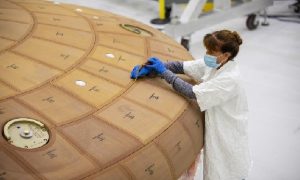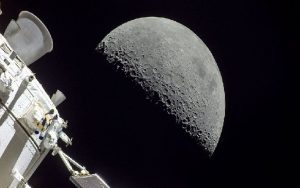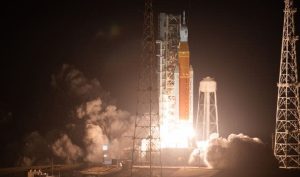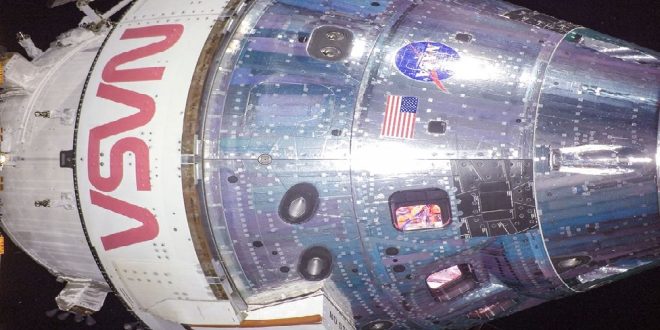12-12-2022
WASHINGTON: The US space agency NASA to bring home its Orion capsule.
The spaceship, which has been on a three-week journey around the Moon, is targeting a splashdown in the Pacific Ocean off California.
 Un-crewed for this test flight, the capsule is expected to carry astronauts on its next outing, assuming everything works as planned in the coming hours.
Un-crewed for this test flight, the capsule is expected to carry astronauts on its next outing, assuming everything works as planned in the coming hours.
The parachute-assisted drop into the sea should occur at about 09:40 local time (17:40 GMT).
The exercise is part of NASA’s Artemis program, a quest to take people back to the lunar surface later this decade.
Fittingly, Sunday marks exactly 50 years since this feat was last achieved by the crew of Apollo 17.
Orion was lined up for the day’s event by its European propulsion module.
This part of the spacecraft executed a big engine maneuver last Monday that pushed the ship away from the Moon and in the direction of Earth.
The incoming velocity will be extremely high. The capsule will be moving at 40,000km/h (25,000mph) or 32 times the speed of sound when it touches the top of our planet’s atmosphere.
What happens next is critical to the success of the whole endeavor.
 Friction and pressure on Orion’s forward-facing surface will generate temperatures likely to reach close to 3,000C (5,000F).
Friction and pressure on Orion’s forward-facing surface will generate temperatures likely to reach close to 3,000C (5,000F).
The shielding that covers this part of the spacecraft has to handle this challenge if Orion is ever to be trusted to carry astronauts in the future.
“This is our priority one objective, for a reason,” said Artemis mission manager Mike Sarafin.
“The heatshield is a safety-critical piece of equipment. It is designed to protect the spacecraft and its passengers, the astronauts on board. So it needs to work.”
NASA already has experience of an Orion re-entry. It conducted a previous un-crewed demonstration of the capsule in 2014. But the velocities – and heating conditions – were much lower during that test.
What that earlier flight did do, however, was prove the effectiveness of the parachute system. Eleven chutes are used in sequence to slow the final part of the descent to the ocean’s surface.
The USS Portland will be waiting to pick up Orion.
In contrast to the helicopters that performed hoisted recoveries of Apollo capsules, Orion will be floated into a flooded well deck at the back of the navy vessel.
 NASA’s Melissa Jones, who’s in charge of the procedure, said various tests and assessments would be conducted while Orion was still in the water.
NASA’s Melissa Jones, who’s in charge of the procedure, said various tests and assessments would be conducted while Orion was still in the water.
“We’ll be very careful with the capsule; we’ll get about an hour and a half of imagery of that heatshield before it touches anything in the ship. We want to make sure we document every bit of that so that we have the data that Orion needs to understand the performance of the capsule going forward,” she told reporters.
Orion is coming down a little short of the location that was originally planned.
The space agency had been targeting a point closer to San Diego, but a forecasted cold front is likely to generate an unwelcome swell in the ocean, along with rain.
A decision was made therefore to come down roughly 550km up range, off Mexico’s Baja California Peninsula.
Watching the re-entry will be NASA’s partner on the mission – the European Space Agency. (Int’l News Desk)
 Pressmediaofindia
Pressmediaofindia




